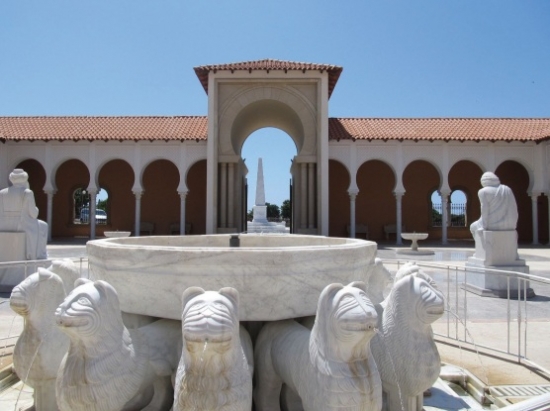
Text & Photos: Lydia Aisenberg
A visit to the Ralli Museum of Modern Art in Caesarea promises to be a cultural joyride, taking the passenger – free of charge – on an amazing journey through diverse periods of European and Latin American art housed in buildings that are works of art in themselves.
The external architecture leaves one breathless even before entering the astonishingly beautiful museum complex with its wonderful courtyards which feature sculptures, fountains, and spacious shaded areas where one can sit and ponder all the artwork that is so aesthetically laid out over a huge area.
Once inside the first building, the visitor is immediately bowled over by the amazing Spanish Colonial interior design, with its luscious dark wooden beams and carved balustrades, wooden and tiled stairways, and arched windows evoking "wow" after "wow”. And that’s before even taking in the incredible exhibitions of enormous canvases and sculptures from the likes of Salvador Dali to lesser-known but extremely talented fellow artists from Latin America.
The sculptures are all shapes and sizes, as are the canvases. Particularly heartwarming are the sculptures of rather round, robust, and jolly elderly ladies who seem to be the South American equivalents of our Yiddishe Mammas. So lifelike are these ladies that one feels an immediate bond with and yearning for the jolly souls; a wish to be able to open up and have a good chat about the grandchildren, jointly bemoan the battle of the bulge and the creaking joints, the current lack of educational values, creativity and development of the learning processes which we once held so dear for our children. Now, their own children get it all from a small gadget in the pocket, while we low-tech folk are struggling to use a mobile phone with numbers we can hardly see even with our specs on!
After a few floors of incredibly colorful and detailed paintings, one comes out onto an open-air rooftop sculpture garden surrounded by Spanish Colonial-style arched verandas, providing shade and seating and offering breathtaking views of natural beauty created by the most talented artist of all, Mother Nature. The artistic talents of painters, sculptors, architects, and the lady herself all blend in a truly wondrous partnership between nature and what comes naturally to talented and extremely creative mortals.
One can see the huge palm trees, dense greenery, eye-catching multicolor bougainvillea, the red rooftops of the upscale homes of the rich and famous Caesarea neighbors, the beach and the sun shining on the seemingly motionless azure Mediterranean waters in the background. All this and more, viewed between the arches of the sculpture park, give the impression of a series of framed canvases of fauna, flora and – looking at the homes – a fair dollop of fantasy also thrown in for good measure.
Situated just a few minutes’ drive down the road from the ancient port and historically rich site of Caesarea, the Ralli Museum opens up a world of diverse cultures and no-holds barred imaginative art works in addition to a permanent exhibition entitled “Herod’s Dream”. The archeological exhibition presents the Hellenistic, Roman, Byzantine, Islamic, and Crusader periods of Caesarea. It was originally produced in the mid-1980s by the Smithsonian Institute, and exhibited in the US and Canada in the late 1980s. It is definitely a must see before visiting the nearby excavations.
The second of the two main Ralli Museum buildings is a four-storey blast back to our Biblical past, with presentations of original classic paintings of Biblical scenes from the 16th-18th centuries. In a large plaza outside the entrance is an impressive pinnacled monument in memory of the Italian Jews who perished in the Holocaust and commemorating the Italians who risked their own lives to save fellow Italians who were Jewish.
The high arched entrance to the building opens onto an enormous courtyard, again displaying magnificent statues, water fountains, and other special features. Every step taken towards the main building with its romantic Romeo and Juliet-type balconies is a treat with the wow-factor working full-time, especially when it sinks in that this is the private collection of one man - Harry Recanati - and his family, and that there are another three Ralli Museums in the world - in Uruquay, Chile, and Marbella. Recanati’s wish was to share the superb collections with appreciative audiences, and to encourage visitors to learn more about Latin American artists in particular.
Recanati was born in 1919 in Salonika, Greece, to Leon Recanati and Mathilde Saporta. The Recanati family originated in Italy and the Saportas were of Spanish origin. Leon founded the Palestine Discount Bank in Tel Aviv in 1935, and when he died 10 years later, Harry was appointed managing director. At a later stage, a family disagreement led Harry to leave the banking business, and the Palestine Discount Bank was renamed the Israel Discount Bank.
The family disagreement must have been almost as huge as the earthquakes that uprooted huge marble pillars a few miles away at Caesarea. Next to the Ralli Museum entrance, a large notification ensures that visitors do not confuse the Ralli Museum Recanati family with the banking branch of the extended family.
Another impressive point about the Ralli Museum is the number of children who visit either with their classmates during the academic year or with their parents during the holidays.
“We bring all our visitors from abroad to the Ralli Museum,” one lady told me. The mother-of-three and resident of Hadera, a short drive away, pointed to her children sitting cross-legged on the floor and an elderly aunt and uncle from France perched on a bench behind them, all admiring a gigantic colorful canvas that reached from the floor to the ceiling.
Four portly women were also sitting on the floor, but they belonged to the silent, sculptured South American ‘bubba brigade’, one of which waseven patted o gently on the head by one of the children when they stood up to move on to the next mesmerizing exhibit.
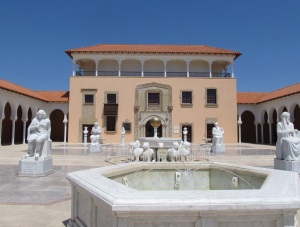
 Milestones 168
Milestones 168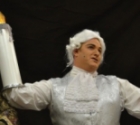 “Be our Guest” at Beauty and the Beast
“Be our Guest” at Beauty and the Beast Advertisers List
Advertisers List Art from the Heart
Art from the Heart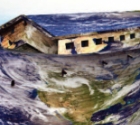 Jewish Art Returns to Jerusalem
Jewish Art Returns to Jerusalem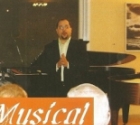 Musical Treats
Musical Treats Lydia Aisenberg
Lydia Aisenberg